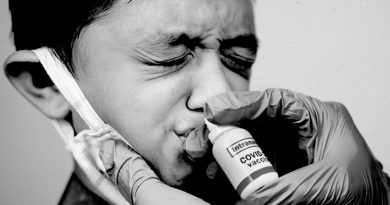2018 in Review: The Good(Rx) and the Bad in Prescription Drug Prices
According to a GoodRx analysis, from 2017 to 2018, prices for the most popular 200 brand drugs increased by 5.5%, new drugs saw higher prices, and drug manufacturers continued to push the limit on their pricing strategies.
This data reflects overall US prescriptions (not fills using GoodRx) and comes from several sources, including pharmacies and insurers, providing a representative sample of nationwide US prescription drug volume.
Brand drugs are getting more expensive
From 2017 to 2018, the most popular 200 brand drugs increased in price by 5.5%. Not good.
This increase can be largely attributed to two factors: the release of more expensive brand drugs (like biologics), and price increases by manufacturers. As manufacturers continue to develop expensive biologics and brand drugs for rare diseases, it’s likely we will see an exponential increase in the price for brand drugs.
Generics are getting more affordable
Even though brands are getting more expensive, generic drugs saw a small price decrease recently. From 2017 to 2018, prices for the top 500 generics dropped in 2018, by 2.8% to be exact. Generics are almost always more affordable than their brand-name counterparts, so this small decline is a breath of fresh air amidst ever-climbing drug prices.
New drugs are getting more expensive
Prices for newly approved drugs went up from 2017 to 2018, which isn’t a good sign for the future.
On the one hand, brand drugs approved in 2018 are only 2% more expensive than already existing brand drugs in 2018. But while 2% may seem minimal, take a look at prices for generics. Generic drugs approved in 2018 are 379% more expensive than already existing generic drugs.
Drug prices for three conditions are rising fast
If you take medications for any of the three following conditions, you may experience sticker shock at the pharmacy.

From 2017 to 2018 prices for atrial fibrillation medications increased by 7.6%, prices for psoriasis medications increased by 6.9%, and prices for COPD medications increased by 3.5%.
Prices for popular drugs increased by over 6%
Around 397 drugs increased in price in 2018, and 32 decreased in price. These prices are based on the list price of a drug, which is the official price set by the manufacturer. While few people actually pay the list price for their drug, as they are protected by their insurance, the list price is a good measure for the cost of a drug.
Of the nearly 400 drugs that saw price increases, these popular drugs saw an increase above 6%:

Notice the large number of drugs that increased by 9.9%? That’s not a coincidence.
As the conversation regarding drug prices has heated up over the past couple of years, manufacturers have slowly taken a pledge to keep price increases below 10% annually—but they continue to push the limit. In 2018, 62 drugs increased in price by 9.9%. Read more about the 9.9% price hikes here.
Popular drugs went generic
A number of drugs went generic this year, meaning that more expensive brand-name medications now have cheaper alternatives. In some instances, filling a generic instead of a brand can mean a difference of hundreds of dollars per prescription, whether you’re insured or paying the retail price.
Here some of the major drugs that got generic alternatives in 2018:
- Cialis (tadalafil)
- Levitra (vardenafil)
- Daliresp (roflumilast)*
- Truvada (emtricitabine/tenofovir)*
- Atripla (efavirenz/emtricitabine/tenofovir)*
- Suprax (cefixime)
- Onfi (clobazam)
- Zytiga (abiraterone)
*not yet available in pharmacies
But 90+ drugs were dropped from formularies
Every year, insurers add and remove drugs from their formularies, the list of drugs that they cover. We have been tracking these formulary changes for five years, and this year set a record—insurers stopped covering over 90 drugs in 2019.
If you’re taking popular drugs like Invokana or Pradaxa, you may have to pay out of pocket for them in 2019. Read here for the full list of formulary exclusions.
Some other things that happened in 2018
- We released a new blog, full of more data, more stories and more ways to help you save.
- Our friends at Iodine won the Webby Award for best health website.
- GoodRx partnered with Kroger to help patients save up to 100% on their prescriptions.
- The FDA recalled valsartan-containing products due to contamination concerns.
- GoodRx built the largest database for copay cards and patient assistance programs.
- New shingles vaccine, Shingrix, experienced a widespread shortage.
- A new report discussed 12 expensive brand drugs that may never see a generic because of patent restrictions.
- Walmart updated their prescription savings program.
- The GoodRx Research Team revealed the most, and least, expensive US cities for prescription medications.
- The GoodRx Research Team uncovered the most frequently prescribed drug in each state.
What’s in store for next year?
The conversation surrounding drug prices will likely continue into 2019, but will prices drop? Probably not.
Luckily, we’ll still be here, finding more ways to help Americans save on their medications. In 2018 GoodRx saved Americans over three billion dollars, released a new savings program with Kroger, and found new lower prices for many popular drugs. Yes, 2018 was great, but 2019 will be better; our team of over 100 researchers, marketers, developers and economists will make sure of it.
From all of us at GoodRx, Happy Holidays!
Co-contributors: Jeroen van Meijgaard, PhD and Clement B. Feyt, MPH
Methodology: Data from January 1, 2017 to November 30, 2018 was gathered to represent 2017 trends and from January 1, 2017 to November 30, 2018 to represent 2018 trends. Reported drug prices do not include over-the-counter or healthcare practitioner-administered drugs. Sources for prescription claim data were limited to community retail pharmacies.
Source: Read Full Article



